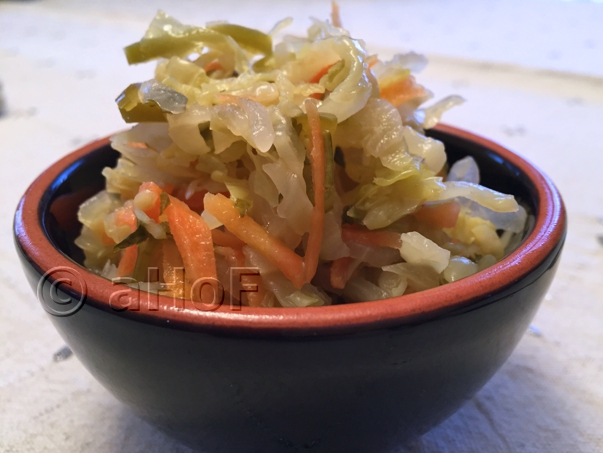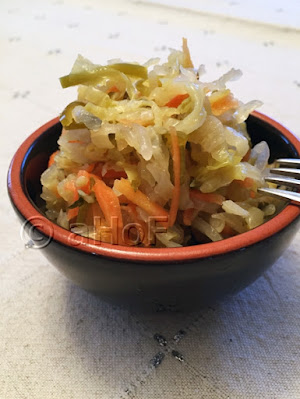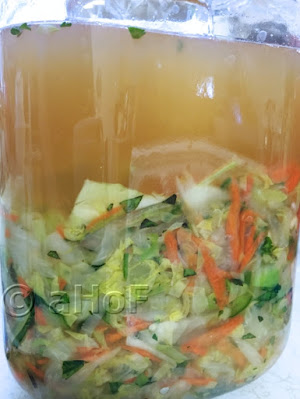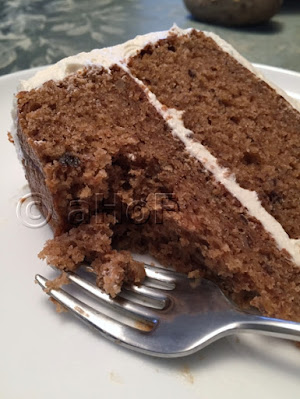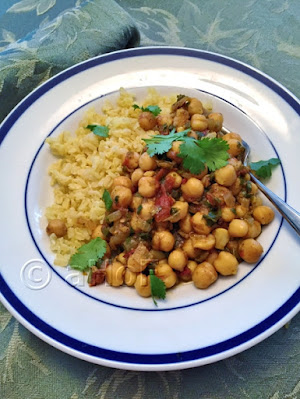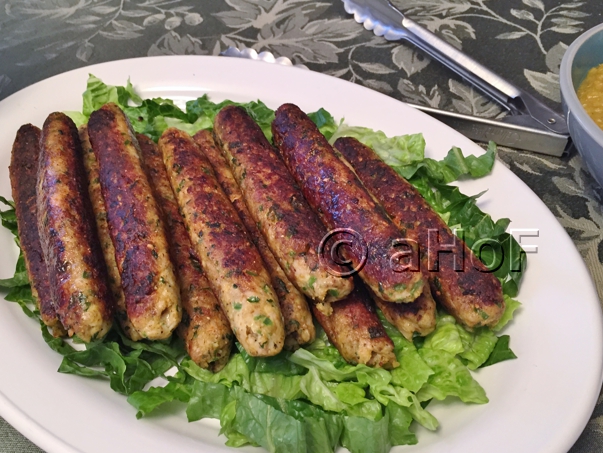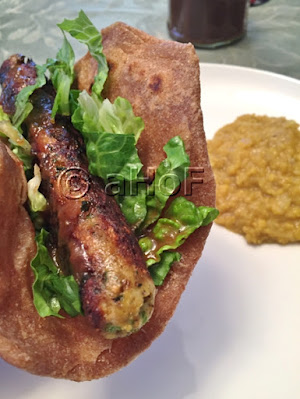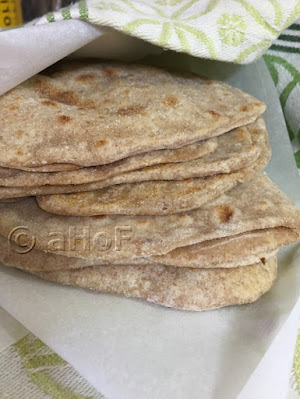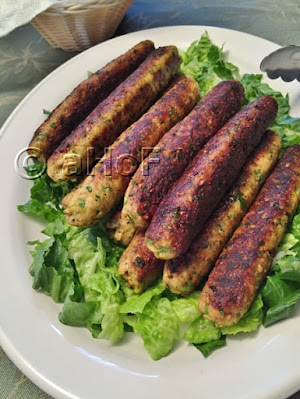I absolutely despise frying things. I hate the mess, the hot oil, the drips all over the place to clean, and then what to do with the leftover oil. All that oil, wasted. Because guess what? I hate to fry things! Oh well. Today I made the exception, because I am having guests over next week for an Indian meal, and I am going all out.
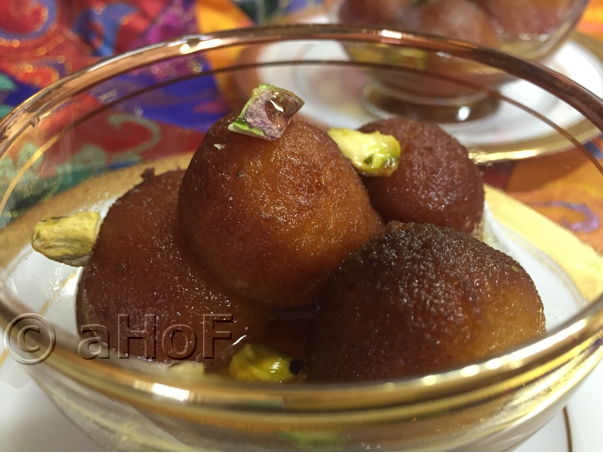 |
| Gulab Jamun |
I am making things for this meal that I have made before, so there is no surprise anywhere. I am going to have Rogan Josh as the main entree with two side dishes: Indian Cabbage and Rice and Palak Paneer (creamed spinach with milk cheese). I will have three chutneys. Two of these are authentically Indian: Imli, or Tamarind Chutney, and Dhania Poodina, a fresh cilantro and mint chutney. The third is a Mango Chutney I make, and which my husband loves. For breads, I am making Naan and also Aloo Parathas, or Parathas filled with spiced potatoes. And for dessert? Gulab Jamun.
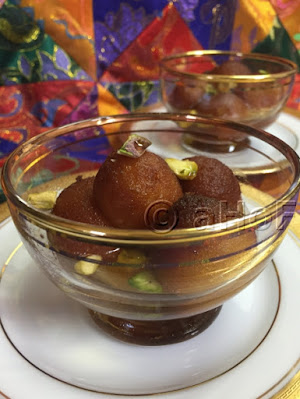 |
| Gulab Jamun in tiny 4-inch bowl |
What are Gulab Jamun?
As already stated, these are little balls of a milk dough, which are fried and then soaked in a sugar syrup flavored with cardamom and rosewater. The word Gulab means rose, and this is because there is generally rose water flavoring the syrup these little balls are soaked in. Jamun is a reference to a fruit called a Java Plum, and may refer to the size of the little balls.In India, these milk balls are made using milk that is cooked down over a long slow period, leaving a very thick curd-like mixture, called khoya or mawa. To read more about this process, go to this site.
Despite this being the traditional way to come to the dough for these treats, there are various other simpler methods to make them that do not require so much extra time. Many recipes I have seen say that khoya is sold in the freezer section of grocery stores, next to other Indian foods. All I can say is - not where I live! So then it comes down to the fact that it is a very thickened version of milk we are talking about, and so there are other recipes using various mixtures of milk powder, milk / cream, and / or flour. Some use ground nuts in the dough, or ghee, some add ground cardamom. As with most recipes, though the end product is similar, there are many ways to get there.
The recipe I have used, sort of cobbled from various recipe techniques, is to make the dough with whole milk powder, flour and cream. The syrup is equal parts sugar and water, with a few saffron threads and cardamom pods thrown in.
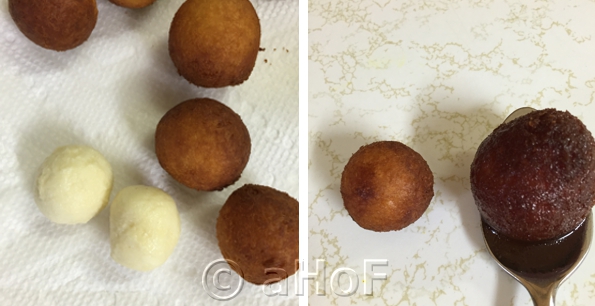 |
| Size change from dough to fried to syrup |
The totally shocking part of this recipe is the change in size in the Jamun from dough balls, to fried, to soaked in syrup. Look for at least a doubling in diameter from start to end, about tripling n volume. The first time I made these, I was looking at a recipe that said to make the dough balls "golf-ball-sized." I tried a couple, fried them and found how much bigger they got and resized down to a walnut size. This still left me with very large Jamuns, and once soaked in the syrup, they seemed huge. In restaurants, the size of the Gulab Jamun served are approximately 1¼ to 1½-inches in diameter. In this case, the dough balls to start should be about ¾-inch in diameter, or slightly less.
Knowing that I am making a very large meal next week, I opted this time to make my Jamun much smaller, about ⅝-inch. Once fried, then soaked in syrup, this left me with Gulab Jamun that were just over an inch wide. I like this size. I can fit 4 or 5 in a small dessert bowl and this should make them just right for after-dinner.
Making the balls this small left me with 95 of the little things. If I serve 5 of them in a little bowl as shown, that would serve 19! Luckily, before putting them in syrup, these can be frozen for a month or two, so they are available whenever you would want a few. I packaged them in little zip-top baggies in portions of 20. In the freezer they went. And all I have to do when I want more is make up the syrup, which takes no time at all.
Gulab Jamun
Makes 50 to 90 balls, depending on size.
DOUGH:
1½ cups dry whole milk powder
½ cup all purpose flour
1 teaspoon baking powder
1¼ cups heavy cream
1 quart oil, for frying
SYRUP (For about 25 - 30 jamun. Double as needed.):
1½ cups water
¾ cup sugar
2 - 3 cardamom pods, crushed slightly
1 - strands saffron, optional
2 - 3 drops rose water
DOUGH: Sift together into a bowl the milk powder, flour and baking powder. Add in the heavy cream and stir just until the mixture comes together. Cover with plastic wrap and let set for 10 to 30 minutes, as needed.
Form the dough into balls about the size of a grape. You may need oil or ghee on your hands to roll the balls very smooth. While the rolling process takes place, heat the oil in a saucepan. It will need to be at about 320 to 325 degrees. A thermometer helps to keep tabs on the oil. Do not over heat.
Once the jamuns are all rolled, begin adding them carefully into the hot oil. Use a slotted spoon to move them around in the oil so they color evenly. They should get to a deep mahogany brown. This can take from 6 to 8 minutes, depending on how hot the oil. I fried mine in batches of 25 or so. Once browned, remove to a platter lined with paper toweling.
Knowing that I am making a very large meal next week, I opted this time to make my Jamun much smaller, about ⅝-inch. Once fried, then soaked in syrup, this left me with Gulab Jamun that were just over an inch wide. I like this size. I can fit 4 or 5 in a small dessert bowl and this should make them just right for after-dinner.
Making the balls this small left me with 95 of the little things. If I serve 5 of them in a little bowl as shown, that would serve 19! Luckily, before putting them in syrup, these can be frozen for a month or two, so they are available whenever you would want a few. I packaged them in little zip-top baggies in portions of 20. In the freezer they went. And all I have to do when I want more is make up the syrup, which takes no time at all.
Gulab Jamun
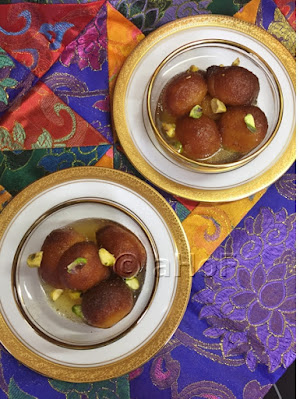
Gulab Jamun

Makes 50 to 90 balls, depending on size.
DOUGH:
1½ cups dry whole milk powder
½ cup all purpose flour
1 teaspoon baking powder
1¼ cups heavy cream
1 quart oil, for frying
SYRUP (For about 25 - 30 jamun. Double as needed.):
1½ cups water
¾ cup sugar
2 - 3 cardamom pods, crushed slightly
1 - strands saffron, optional
2 - 3 drops rose water
DOUGH: Sift together into a bowl the milk powder, flour and baking powder. Add in the heavy cream and stir just until the mixture comes together. Cover with plastic wrap and let set for 10 to 30 minutes, as needed.
 |
| The dough, the formed jamun, frying and draining |
Once the jamuns are all rolled, begin adding them carefully into the hot oil. Use a slotted spoon to move them around in the oil so they color evenly. They should get to a deep mahogany brown. This can take from 6 to 8 minutes, depending on how hot the oil. I fried mine in batches of 25 or so. Once browned, remove to a platter lined with paper toweling.
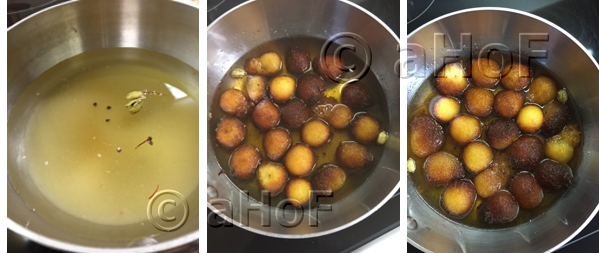 |
| The syrup, the jamun just added, the jamun growing after a few minutes of soaking |
SYRUP: If making all of these at one time in syrup, you may have to triple the syrup recipe. Mix the sugar and water together with the cardamom pods and saffron strands. Bring to boil, lower to a simmer and cook gently for about 10 minutes, to bring out the flavors.
When syrup is ready, add in the fried, drained jamun. Let them soak in the syrup for at least 3 hours, or overnight. If refrigerated, bring them back to just tepid, either in microwave or in a pan on the stove.
To serve, sprinkle on some crushed pistachios or organic rose petals, if available.
MAKE AHEAD: If making these in advance (which I highly recommend, as they take some time and mess), once they are fried, but before making the syrup, either refrigerate them for up to 3 days, or pack in a tightly sealed container or zip-top bag and freeze for a month or two. When ready to use, prepare the syrup and add in the jamun to absorb the syrup.
My passion is teaching people how to create a harmony of flavors with their cooking, and passing along my love and joy of food, both simple or exotic, plain or fancy. I continue my journey in ethnic and domestic cuisines, continuing my journey to explore diverse culinary experiences and hopefully to start you on a journey of your own. Join me also at A Harmony of Flavors on Facebook, and Pinterest.
When syrup is ready, add in the fried, drained jamun. Let them soak in the syrup for at least 3 hours, or overnight. If refrigerated, bring them back to just tepid, either in microwave or in a pan on the stove.
To serve, sprinkle on some crushed pistachios or organic rose petals, if available.
MAKE AHEAD: If making these in advance (which I highly recommend, as they take some time and mess), once they are fried, but before making the syrup, either refrigerate them for up to 3 days, or pack in a tightly sealed container or zip-top bag and freeze for a month or two. When ready to use, prepare the syrup and add in the jamun to absorb the syrup.
My passion is teaching people how to create a harmony of flavors with their cooking, and passing along my love and joy of food, both simple or exotic, plain or fancy. I continue my journey in ethnic and domestic cuisines, continuing my journey to explore diverse culinary experiences and hopefully to start you on a journey of your own. Join me also at A Harmony of Flavors on Facebook, and Pinterest.

